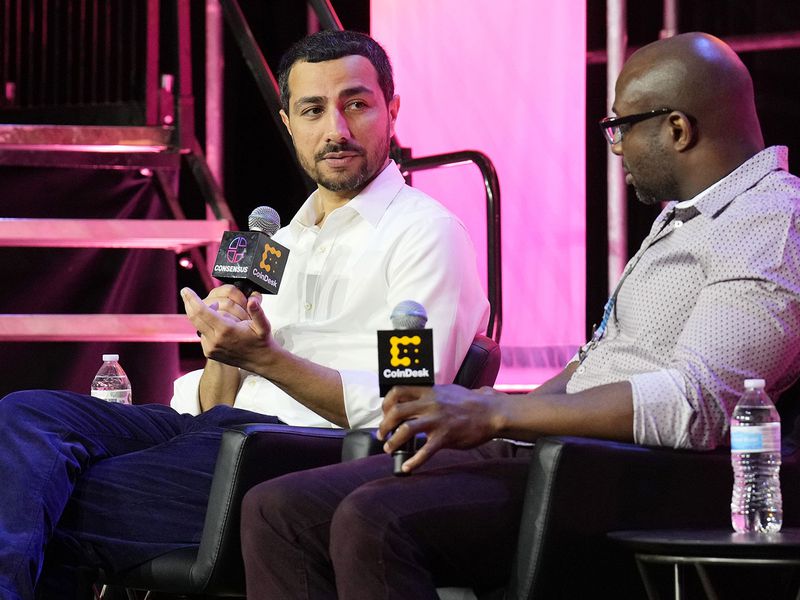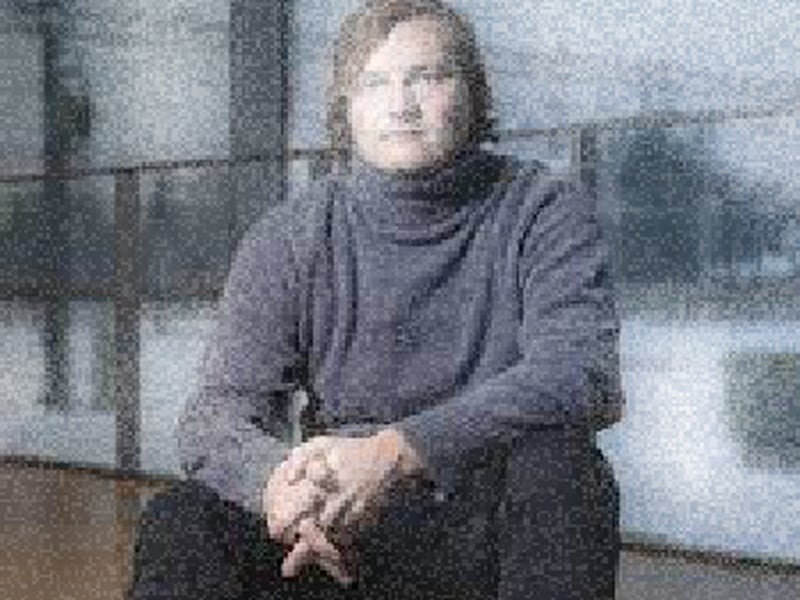Beyond the JPEG: Web3 Is Expanding the Artist’s Canvas Through Immersive IRL Experiences
On May 5, thousands of people packed the streets surrounding renowned architect Antoni Gaudí’s Casa Batlló in Barcelona, Spain. It wasn’t the typical horde of tourists though – viewers from near and far gathered to experience digital artist Refik Anadol’s dynamic work projected onto the facade of the UNESCO World Heritage Site.
The ten-minute video mapping of Anadol’s generative non-fungible token (NFT) artwork “Living Architecture” captivated the crowd as colors, lights and sounds made the building feel alive. The work had debuted as a projection on Casa Batlló the year before, but the draw of seeing the work in person brought in tens of thousands of new viewers across five showings that evening.
The show left an impression on its audience in a way that extended beyond its colorful visuals. The emotional reaction of the sensory spectacle came from the sheer number of attendees – both Web3-native and those entirely unfamiliar with crypto – who showed up to watch a public display of on-chain art together.
There are many barriers to entry into NFT and digital art creation. Just setting up a wallet and funding it with cryptocurrency is enough to turn away most newcomers before they even attempt to buy or sell an NFT artwork. Instead of trying to onboard the masses through complex technology, many in Web3 are refocusing the conversation to be about the art itself and are creating delightful experiences that welcome exploration.
“You need to show art that is absolutely, positively worthwhile when taking a passerby’s attention. It is not about converting the museum-goer, but rather the office commuter on a tight schedule,” AC, head of generative art at the 6529 NFT Fund (which owns the “Living Architecture” NFT) told CoinDesk. “Digital and multimedia art have the ability to entrance a viewer where a canvas may be physically constrained, and that is how you bring people into NFTs.”
Manager of digital art sales at Christie’s Sebastian Sanchez told CoinDesk that digital art calls for flexibility and invites artists to be creative about how they display their work and engage with their audience.
“Artists may have instructions on how they want to display their art, but you can put it on a projector, you can put it on the screen, you can print it, you can put it on your computer… there are infinite ways to display digital art, which I think is the exciting part and sort of lends itself to this fluid nature,” said Sanchez.
Expanding the dimensions of digital art
Susannah Maybank, CEO of digital art marketplace Tonic, noticed a core problem in her early days of founding her Web3-native company: The growing appetite for NFT art was missing a real-life component.
“We began with a lot of customer research of figuring out what were their priorities, what were they hesitant about?” Maybank told CoinDesk. “And that utility of display was a recurring theme where people really valued the ability to live and appreciate the art in their homes and in their lives.”
When a collector purchases an NFT from Tonic, they also receive a physical derivative of the work to own and display IRL. Maybank said this consumer model encourages more collectors to appreciate the art rather than simply collect it for its market value or promised utility.
“When looking at something on a screen with a 12-inch MacBook, you lose so much and it’s such a pale experience,” said Maybank. “When you’re in a room with people, you feel the energy, you’re able to meet the artist and that’s when you get to really experience the work as it was intended.”
J. Douglass Kobs, CEO and founder of digital art marketplace and residency program Wild, told CoinDesk that its mission is to expand opportunities for art collectors by creating experiences that transcend physical boundaries.
Wild is building out its Wildverse, an art-oriented metaverse that aims to bring communities together in a digital space where they can discuss their work, view their counterparts’ creations and learn how to build on-chain art collections. Kobs said Wildverse also aims to help onboard new users, “welcoming people with open arms” as they explore new mediums for creating art.
“I really felt like if we could start to engage more senses, then you’re able to connect with people in a very different way as an artist because you’re trying to build an emotional connection and you’re trying to convey a message,” said Kobs. “My top priority is not ‘how can I print this and put it on my wall?’ but rather ‘how can I enable artists to connect with their collectors in ways that weren’t possible before?’”
Galleries are paving new pathways for collectors
As creators and collectors continue to find new ways to make on-chain art more accessible, museums and galleries around the world have slowly started to embrace digitally-native art collections.
In December, NFT giant Yuga Labs kicked off its Punks Legacy Project, an initiative to donate CryptoPunks NFTs – one of the first NFT collections ever on the Ethereum blockchain – to museums around the world. It has donated Punks to The Institute of Contemporary Art in Miami and the Paris’ Centre Pompidou museum so far. NFT collector Cozomo de’ Medici also donated 22 digital artworks to the Los Angeles County Museum of Art from their personal collection.
In March, generative artist Tyler Hobbs held New York-based Pace Gallery’s first Web3 solo exhibition featuring physical derivatives from his popular QQL NFT collection. And since November 2022, Refik Anadol’s “Unsupervised” digital artwork has been on display on the first floor of New York’s Museum of Modern Art.
Beyond viewing digital art in galleries, startups like Bright Moments are allowing collectors to be a part of the art creation process.
Bright Moments has physical gallery locations in Berlin, London, Mexico City, New York, Venice and Tokyo, and holds in-person events year-round across its six locations. It also has its own NFT collection, CryptoCitizens, which grants holders access to the Bright Moments DAO — a decentralized community that can vote to decide which Bright Moments location hosts its next event.
Brougkr, a full-stack engineer at Bright Moments, told CoinDesk that a unique part of each Bright Moments event is that the artists and collectors get to stand in the same room to watch their NFT be minted and the art be created for the first time.
“That is such a beautiful moment to be able to see unfold in real-time, seeing the culmination of an artist’s work and all the time and energy they put into their algorithm to create the collection,” said Brougkr.
Christie’s Sebastian Sanchez said that while NFT art attracts Web3-native buyers, more “traditional” art collectors are beginning to see real value in the space.
“The majority of people who walk through our halls and galleries in New York are ‘traditional’ clients, so those are non-NFT people seeing this art for the first time, and I think that’s great,” he said. “The value for digital art is almost equally the idea of owning it and equally the idea of loving it.”
Creating for cultural evolution
Andre O’Shea, an NFT artist and animator that uses artificial intelligence (AI) in his practice, told CoinDesk that the definition of art is continuing to evolve through NFTs.
“I grew up seeing film, TV and animation as art. So when I see NFTs and digital art becoming more popular to display, it feels like a natural progression,” said O’Shea. “Our world is increasingly digital so our art should be as well.”
Auguste Wibo, a pseudonymous NFT artist who has participated in the Wild residency program, told CoinDesk that art has historically reflected the cultural zeitgeist, which now demands NFT representation. When experiencing art, he believes the context is just as important as the content.
“Museums have a responsibility to tell these stories,” said Wibo. “Whether it’s AI or the algorithms behind these new pieces that galleries are showcasing, they reflect our times and it will be very interesting to observe in context with pieces from the past.”
And similar to expensive pieces of fine art that are hidden away from the public, Wibo noted the importance of pulling rare NFTs out from digital storage spaces, inviting everyone – not just the ultra-wealthy – to experience them.
“It’s not only expensive NFTs that are kept behind closed doors – very expensive physical art will probably never be seen by the public and only enjoyed by private collectors or institutes,” said Wibo. “There is a long way to go for both mediums to be considered equal so it’s important to push digital art in front of non-crypto natives to educate viewers.”
Edited by Rosie Perper.









